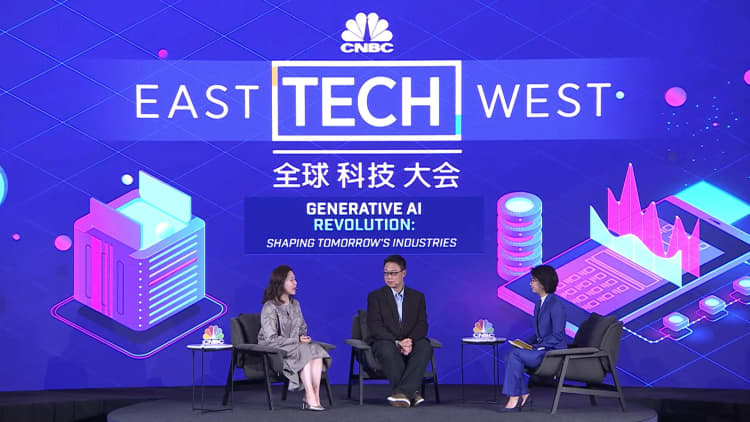[ad_1]
Ole_cnx | Istock | Getty Images
Generative AI adoption rate for businesses is yet to match the hype around the technology, with data privacy, regulation, and IT infrastructure acting as major barriers to its widespread use, according to a recent survey.
The global survey of more than 300 business leaders by MIT Technology Review Insights and Australia-based telecoms company Telstra revealed only 9% of them were significantly using AI.
While most leaders were optimistic about AI’s potential and expected to widen its usage, currently even the early adopters of this technology have deployed it for limited business areas.
“There is a misconception about how easy it is to run mature, enterprise-ready, generative AI,” said Stela Solar, Inaugural Director at Australia’s National Artificial Intelligence Centre in the survey report.
Its adoption may require companies to “improve data quality and capability, privacy measures, AI skilling, and implement organization-wide safe and responsible AI governance,” she added
“There are surrounding elements like the app design, connection to data and business processes, corporate policies, and more that are still needed.”
Ambitions and headwinds
Most business leaders said they expect the number of business functions or general purposes for which generative AI will be deployed to more than double by 2024.
Early adopters in 2023 had mostly deployed the technology for automating repetitive, low-value tasks due to them requiring less human supervision, said Chris Levanes, head of South Asia marketing at Telstra.

As many as 85% of the respondents expect to use generative AI for these low-value tasks by 2024, with 77% expecting to implement it in customer service and 74% for strategic analysis.
Product innovation, supply chain logistics, and sales were other areas for potential deployment.
The report, which labeled these plans as high on “ambition and hubris,” mentioned several headwinds to a widespread rollout of generative AI next year, specifically IT resources and capabilities.
Fewer than 30% of the respondents ranked the IT attributes at their companies as conducive to a rapid adoption of generative AI, with those rolling out generative AI reposing even less confidence in their IT infrastructure to support the new technology.
Meanwhile, 56% of the respondents said their IT investment budgets, in general, were a limiting factor in rolling out generative AI.
As many as 77% of the respondents cited regulation, compliance, and data privacy as key barriers to rapid employment of generative AI — a leading concern for generative AI ecosystem since the technology burst into prominence at the end of 2022 following the release of Open AI’s popular ChatGPT.
The technology has since led to numerous lawsuits related to the copyrights of AI-generated materials. Major companies have also experienced sensitive information leaks and security issues owed to its usage.

Speaking to media at a launch of the MIT report in Singapore on Monday, Laurence Liew, director for AI innovation at AI Singapore, reiterated that addressing these risks will require laying out well-established governance structures and security protocols for AI models.
“Companies must ask, do we have the appropriate governance in place, and are our internal documents properly segmented or secure?” said Liew, noting that businesses will want to avoid having AI models that can be tricked into disclosing private information such as employees’ salaries.
The ability to address these risks also relies on companies implementing robust internal cybersecurity measures, according to the report, with a thin majority of respondents saying that their cybersecurity measures are “at best modestly capable” of supporting a generative AI rollout.
Other barriers to generative AI adoption according to the survey respondents included the lack of relevant generative AI skills. Companies are worried they don’t have the right talent internally, and about its unavailability in the market.
Disruptors versus the disrupted
Still, the survey reflected overall positive sentiments about the future role of generative AI in business. While six of 10 respondents expect generative AI to substantially disrupt their industry in the next five years, 78% see it as a competitive opportunity. About 8% see it as a threat.
While building generative AI solutions that can responsibly handle large datasets and contextualize them for business is extremely challenging, it will soon be well worth the investment, according to Geraldine Kor, managing director of South Asia and head of global enterprise at Telstra International.
“When implemented successfully, [generative AI] proficiency will be a game-changer for most organizations and will distinguish leaders from followers,” she said in a statement about the survey on Monday.

According to a report from McKinsey released last year, generative AI is expected to have its biggest impact on sales, marketing, consumer operations, software development, and R&D sectors, and could add an estimated $4.4 trillion annually to the global economy.
[ad_2]
Source link
